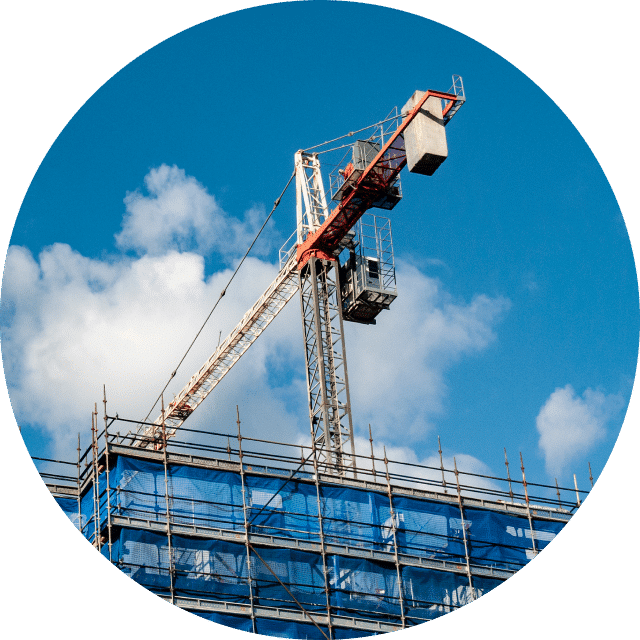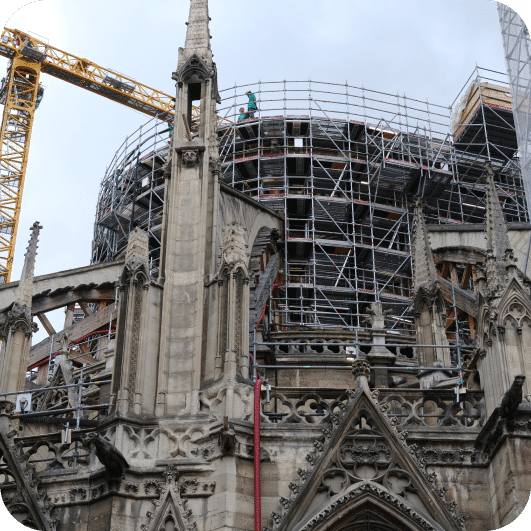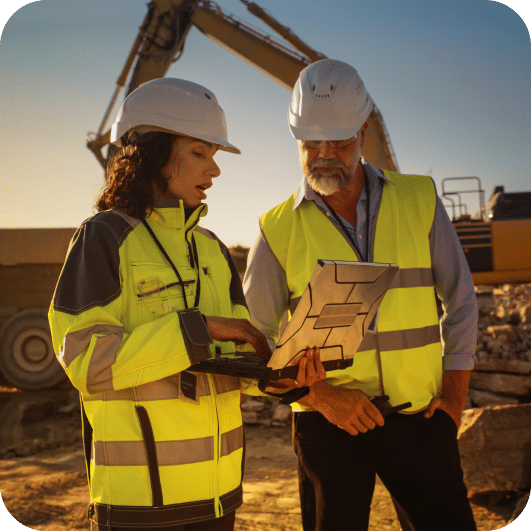Your Guide to Adaptive Reuse
Archiecture and construction methods, tactics and approaches are always evolving. This is simply a reflection of a world that is changing, too.

Today’s architects and contractors are dealing with conditions that have a pronounced impact on their work.
These conditions include:
- Evolving carbon emission regulations
- A desire to limit environmental damage
- Changes in building usage patterns
- The risk posed by climate-change-fueled disasters
Adaptive reuse and the related concepts of retrofitting and resilient design are among the methodologies rising in the modern landscape. These strategies are essentially about accomplishing more with less. Rather than giving into a cycle of demolition and rebuilding, architects can use these methods to efficiently repurpose space and structures.
Reducing a construction project’s footprint in terms of energy and resource consumption, while also creating landscapes that meet the needs of today’s occupants, is the promise of adaptive reuse. This and similar techniques point toward an increasingly sustainable vision for the construction industry, one that will have major consequences over the next few years.
What Is Adaptive Reuse? Definition, History and Importance
In specific terms, adaptive reuse means using an existing structure as the basis for new construction to suit a different purpose than the structures that have served in the past. This methodology is a contrast to a more standard strategy, which would involve full demolition of the current building before beginning the new project.
A typical adaptive reuse project will involve retaining the external facade of the existing building while making major changes to the interior floor plan to suit the new purpose of the structure. This can have repercussions for historical preservation — maintaining architectural cohesion in a neighborhood — while also letting the building adapt to changing needs.
The Emergence of Adaptive Reuse
Adaptive reuse and related trends have risen in prominence as city skylines around the world have filled out with buildings that will likely remain standing for years to come. The current structures will require significant updates to keep up with both usage patterns and environmental requirements.
The World Economic Forum states that 75% of the buildings that will exist in 2050 are already standing today. Making impactful changes to these buildings can become a major focus area for architecture firms. Indeed, the American Institute of Architects has found that almost half of building projects are based on retrofitting buildings, and that these jobs are more profitable.

The Importance of Adaptive Reuse
Rethinking the usage of structures that are already standing is a way for firms to simultaneously harness multiple important priorities — lowering their own environmental impact by avoiding demolition and ground-up building while also creating interiors more suited to contemporary use. Such a from-scratch project would come with a large embodied carbon footprint. This makes adaptive reuse a sensible path for architects to take as they address issues with the current stock of structures.
The conditions that make adaptive reuse so important aren’t limited to one corner of the architecture and construction industry. Projects can focus on creating residential units to serve as affordable housing, refreshing public infrastructure or retrofitting commercial buildings to suit new usage patterns. When combined, these efforts can enable better use of a variety of buildings while minimizing environmental damage.
For a continued look at adaptive use and resilient design, read our eBook.

Adaptive Reuse, Retrofitting and Resilient Design: Comparing Methods
There’s more than one type of project under the umbrella of renovations. Exploring the differences between these kinds of work shows the breadth of opportunities available to architects as they turn their focus to revisions rather than net-new construction.
Today’s renovation methods are somewhat different from those favored in the past. While once it was more common to reface buildings and update their appearances, the current generation of projects is more functional in nature, considering how the revised buildings will be used in the future, as well as where they fit into climate goals.
Adaptive Reuse
When a building receives a new interior floor plan — with a different purpose than the existing one — that is adaptive reuse. These projects can come in response to major changes in usage patterns. For instance, companies adapting to remote or hybrid work models may find themselves with unoccupied office buildings that could be better put to another purpose.
Since the facade of a building remains the same following adaptive reuse, it can be a way for architects to comply with historical preservation rules. Maintaining an area’s architectural heritage while finding new uses for the internal space grants city planners and building owners a great deal of freedom to adapt to evolving conditions.
Retrofitting
A retrofit project can be considered the opposite of a classic, aesthetically focused renovation. Retrofitting means bringing a building up to new standards in terms of safety, sustainability and comfort. Unlike adaptive reuse, these projects don’t change the fundamental purpose of a structure’s internal space.
Architects who focus on retrofitting can implement smart building systems. Installing all the sensors necessary to create true smart infrastructure can be challenging without a full-scale retrofit. Taking the time to engage in such a project, however, can have various positive effects on the future of the building. After all, systems controlled by smart technology may have ongoing efficiency benefits.
Resilient Design
Engaging in resilient design is a specific type of project, designed to help today’s structures stand up to the risks and demands of a world undergoing climate change. The danger of extreme weather and natural disasters is increasing, and buildings that haven’t received recent upgrades may be susceptible to catastrophic damage from flooding, hurricanes, wildfires and other weather events.
While many renovation projects today focus on environmentally friendly methods to lessen future climate change, resilient design acknowledges that conditions are already worsening. Building owners who harden their buildings to cope with an age of serious natural risk may have already seen these efforts pay off as strong and unpredictable weather patterns crisscross the globe.

How Adaptive Reuse Works
Committing to an adaptive reuse, retrofitting or resilient design project means taking a mindful approach to every step of the process. For these projects to achieve their specific aims, architects must make careful decisions about how they handle planning and execution.
The Process of Adaptive Reuse
Choices on important issues will shape the course of an adaptive reuse project from beginning to end and determine whether it reaches its full potential. Some of the most important decision-making milestones include:
- Choosing high-priority projects: Nearly any building can be a candidate for adaptive reuse, considering the continued importance of structures that are already standing today. When architects pick carefully from among these candidates, they can focus on jobs that have an immediate positive impact on an area, benefiting all involved parties.
- Settling on suitable methods: Performing vetting and research on contractors, subcontractors and suppliers can help keep an adaptive reuse project on track. The same is true of careful advanced strategic planning. A top-quality renovation will exemplify strong values throughout the process.
- Coordinating teams: Making sure every stakeholder can communicate and share information throughout a job is essential to any kind of construction project. High-quality coordination efforts can keep architects, contractors, subcontractors and regulators in touch throughout a building reuse effort.
The Role of Construction Technology
One way in which adaptive reuse is very much like any kind of construction job is the important and ever-expanding role of digital technology for architects and contractors. Technology tools that help with the management of a renovation job include:
Building information modeling (BIM)
BIM has become an essential piece of planning technology, with the sophisticated models created in these solutions allowing various stakeholders to coordinate their efforts and view real-time updates to a job. Such an advanced plan allows careful adjustments and refinements.
Outdoor and indoor environmental analysis
Digital tools can take accurate readings of both the environmental impact of a building and the internal factors that will impact the comfort of its residents. Data analysis lets architects and contractors make impactful decisions at the design stage that will shape the building’s future performance.
Energy modeling
One specific element of modeling a building’s impact and performance involves determining its potential energy use. Architects can work with these accurate projections as they weigh the value of design decisions. The resulting structure will meet goals for responsible environmental impact.
Smart building and IoT modeling and analysis
Smart building platforms and internet of things (IoT) platforms allow building owners to manage the performance of their structures over time. These tech tools, which can come in as part of an adaptive reuse project, allow long-term optimization of energy efficiency.

Get a closer look at Bluebeam’s solutions for architects.
The Outcomes and Advantages of Adaptive Reuse
By studying the variety of building reuse projects already completed or underway today, it’s easy to observe the myriad benefits that come from these jobs. Rather than simply meeting one set of goals, a well-executed renovation can simultaneously help with:
- Historic preservation: Decades- or centuries-old facades are essential parts of regions’ cultural identities. Refitting historic structures allows communities to connect two important priorities, maintaining their heritage while also lowering the carbon footprint of their buildings. The fact that this impact comes without the environmental impact of full demolition and rebuilding is an added benefit.
- Environmental protection: Following an adaptive reuse project, a building may combine cutting-edge features that will help with environmental preservation. These include renewable energy systems such as solar panels, as well as sustainable features to require less energy usage. The construction process can also be optimized to require as little demolition and refuse creation as possible.
- More effective usage: Finding a suitable role for an existing structure is the crux of many adaptive reuse projects. While this effect increased in importance following the massive shifts of the COVID-19 pandemic, such as the rise of remote work and telemedicine, other changes have played out over a longer timeframe. Escalating use of ride-sharing apps, which creates different parking demands, is one such effect.
Renovation Projects in Action
Direct examples from the worlds of adaptive reuse, retrofitting and resilient design show off the potential of these methods to shape the priorities of architects and contractors. Some of these compelling projects include:
- A Pittsburgh craft brewery that used adaptive reuse to revitalize a historic structure and turn it into a community-friendly home base.
- Parking garages that are changing their layouts to adapt to the new normal of ride-sharing apps.
- Office-to-housing conversion projects that can turn disused commercial space into new residences, including affordable housing.
- Ambitious builders’ efforts to create interesting structures out of refitted shipping containers.

Use Technology To Embrace Adaptive Design in Your Work
Since adaptive reuse is now a widespread priority around the world and across building types, an architecture firm can find a profitable and promising lane for itself by committing to more projects of this type.
When your business makes the leap into adaptive reuse, retrofitting and resilient design, it pays to have the right technology tools at your command, to ensure each job receives the right amount of planning support and coordination among team members.
See how Blubeam’s solutions for architects can power adaptive reuse projects: Request a free trial.
Discover how to simplify adaptive reuse projects.






